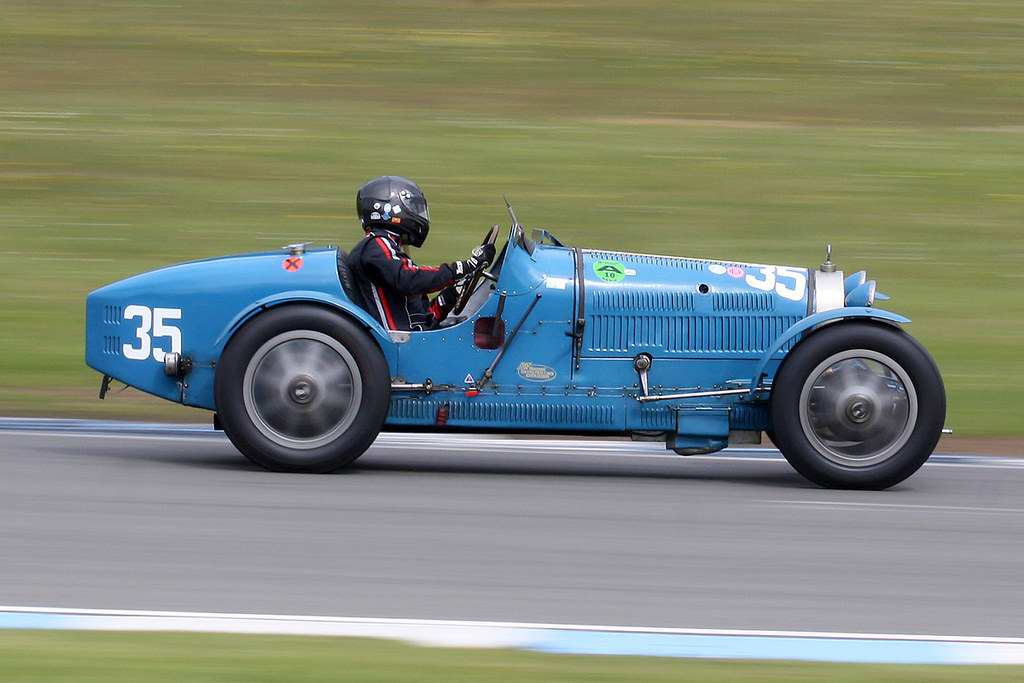1927 Bugatti Type 35 C

The descriptions of the Classic Cars in the Directory were partly generated or supplemented with the help of artificial intelligence (AI). The content may occasionally not always be entirely accurate or factually correct despite careful checking.
The Bugatti Type 35 C 1927 is a classic sports racing car manufactured by the French car makers Bugatti between 1924 and 1930. The Type 35 was a highly successful model that dominated the racing circuits in its era and became one of the most iconic sports cars in history. The Type 35 C is a variant of the Type 35, with the added feature of a supercharged engine.
At the heart of the Bugatti Type 35 C 1927 is a 2-liter, eight-cylinder, inline engine, equipped with a Roots-type supercharger. The supercharger increases the engine's output from 90 horsepower to an impressive 128 horsepower. The engine is a masterpiece of engineering, with a cast-iron block and a twin-overhead-camshaft setup that operated four valves per cylinder. The engine also featured a dry-sump lubrication system that allowed a lower center of gravity for the car, giving the driver better handling and control.
The Bugatti Type 35 C 1927 has a four-speed manual gearbox, with synchromesh on the top three gears. The transmission is mounted in the front of the engine, and drive is transmitted to the rear wheels via a solid propeller shaft. Suspension is independent all around, consisting of quarter-elliptic leaf springs at the front and reversed quarter-elliptic leaf springs at the rear. The car has large hydraulic brakes on all four wheels, with cable-operated drums at the rear and hydraulic drums at the front.
The car's chassis is a simple design, consisting of a ladder frame that is constructed using hollow steel tubes. The frame is light yet strong and is designed to be as aerodynamic as possible. The bodywork on the Type 35 C 1927 is styled in the traditional Bugatti fashion, with a long and low bonnet and a sweeping curve of the fenders over the rear wheels.
In terms of performance, the Bugatti Type 35 C 1927 is a true speedster, with a top speed of around 150 kilometers per hour. The car can accelerate from zero to 100 kilometers per hour in just over six seconds, thanks to its powerful engine and lightweight construction. The car's handling is also outstanding, with precise and responsive steering that allows the driver to push the car through corners with ease.
In conclusion, the Bugatti Type 35 C 1927 is a masterpiece of automotive engineering, with a combination of power, performance, and handling that made it one of the most successful sports cars of its era. Its supercharged engine, independent suspension, and lightweight construction make it a true joy to drive, and its elegant and iconic bodywork encapsulates the true spirit of a classic sports car.
Milestones
- 1925: Development of Bugatti Type 35 begins - 1926: Bugatti Type 35 is introduced at the Grand Prix of Lyon - 1927: Bugatti Type 35 C is released with a supercharged engine - 1927: Type 35 C wins its very first race at the Grand Prix of Dieppe - 1928: Bugatti Type 35 C wins the Targa Florio - 1928: Bugatti Type 35 C wins the Grand Prix of Monaco - 1929: Bugatti Type 35 C wins the Grand Prix of Spain - 1930: Bugatti Type 35 C wins the Grand Prix of Monaco for the second time - 1930: Type 35 C achieves a top speed of 125 mph - 1931: Production of Bugatti Type 35 C ends after producing 50 units.Technical
- Engine: Inline 8-cylinder DOHC - Displacement: 2.0 L - Power output: 128 horsepower at 5500 rpm - Top speed: 150 km/h (93 mph) - Transmission: Four-speed manual - Wheelbase: 2,400 mm (94.5 in) - Weight: 720 kg (1,587 lb) - Brakes: Four-wheel drum brakes - Suspension: Front and rear solid axles with semi-elliptical leaf springs - Fuel capacity: 95 L (25 US gal; 20 imp gal) - Production: 1924–1930 - Total produced: 343 units (including all variations)